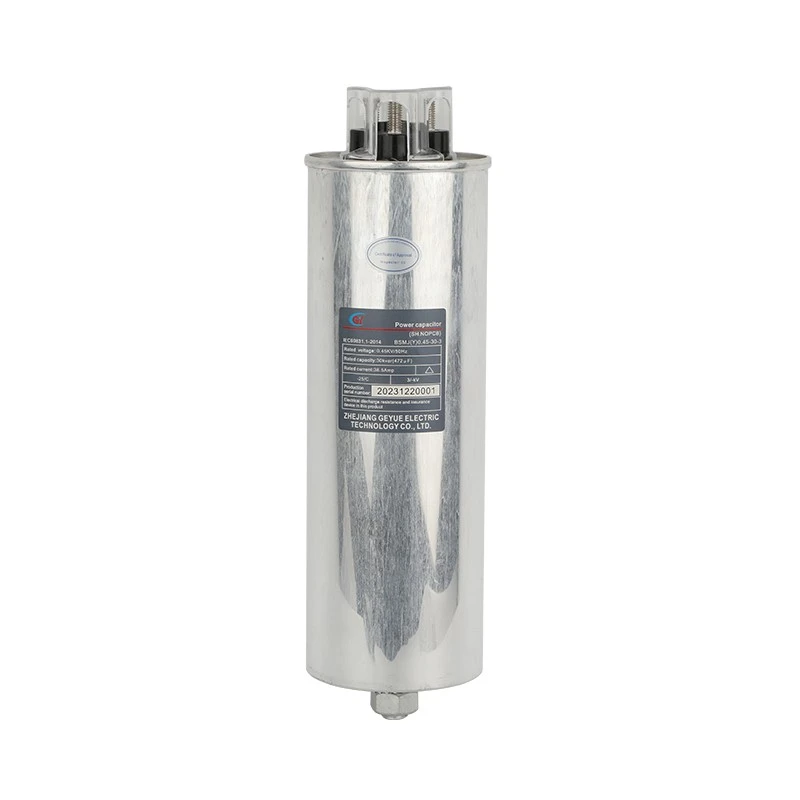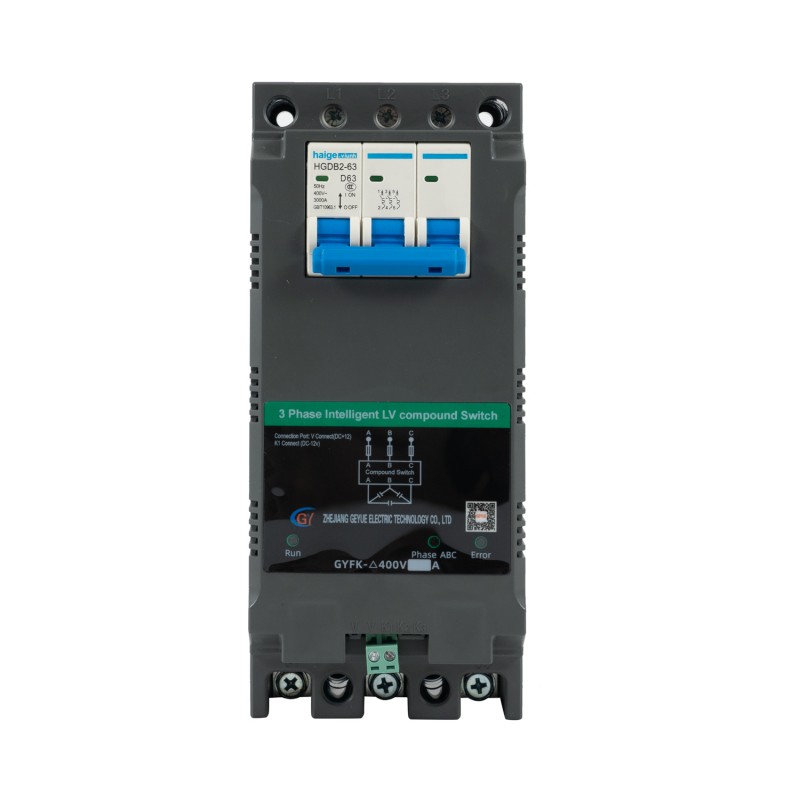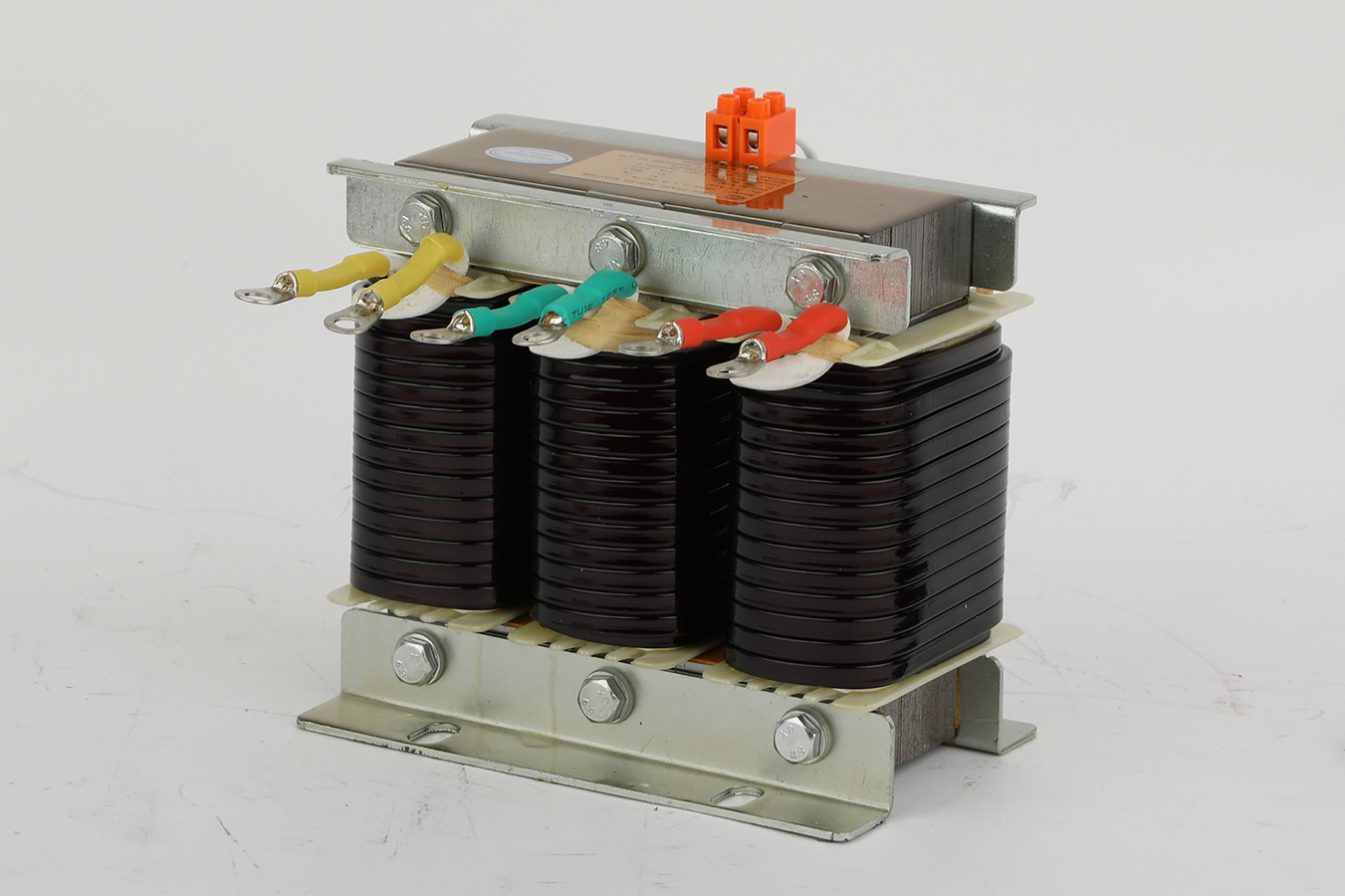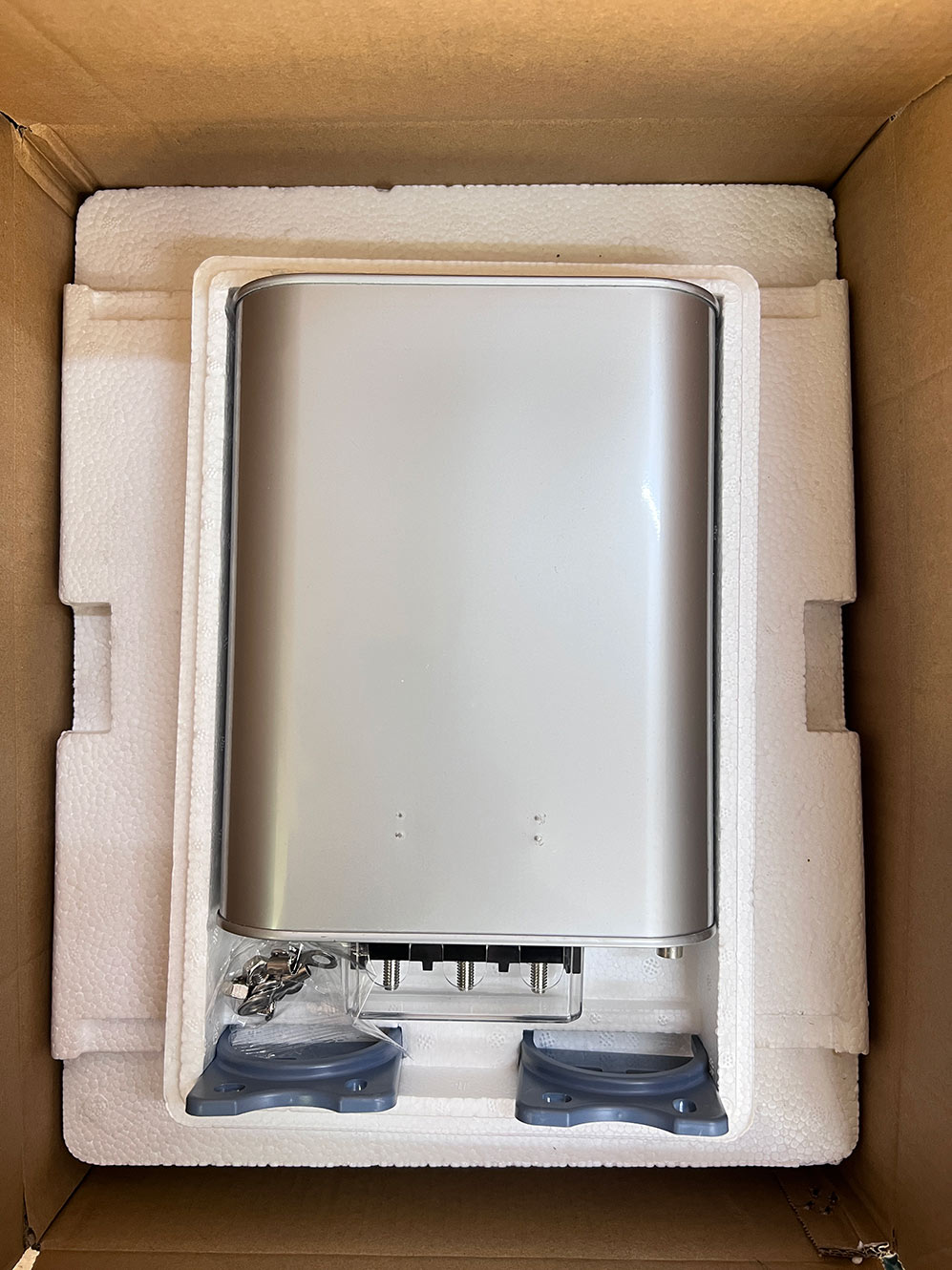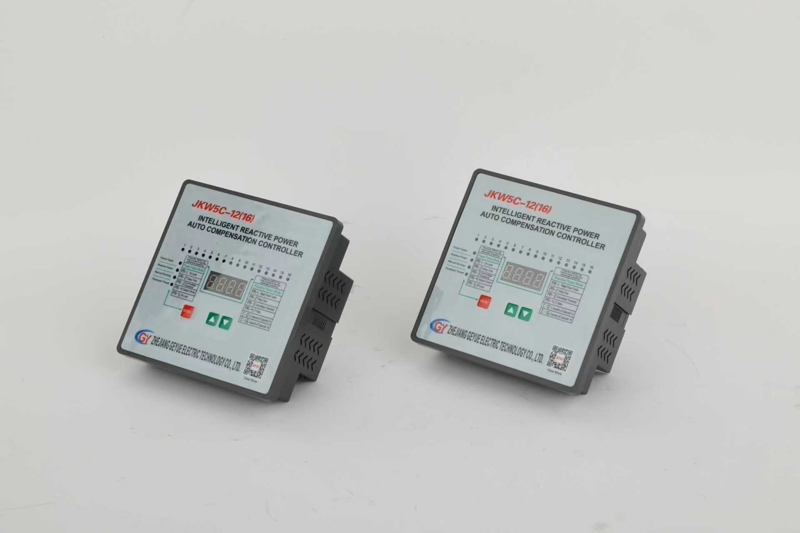What are the Clear Signs That a Capacitor Bank Has Reached Its End-of-Life and Requires Immediate Replacement?
In the field of low-voltage reactive power compensation, self-healing shunt capacitors are like the loyal guardians who silently contribute in the power grid. Their health condition directly affects the stability and safety of the entire compensation system. How to accurately determine whether a self-healing shunt capacitor bank has reached the end of its life cycle and replace it in time is a key issue to ensure the continuous and reliable operation of the system. Geyue Electric believes that users of the low-voltage reactive power compensation system can make an accurate judgment of the state of the self-healing shunt capacitors through the following clear signs.
Warning Signals of Appearance
Observing the changes in the self-healing capacitors within the compensation system, the most direct basis for judgment is the visible physical changes. When you notice that the shells of the self-healing shunt capacitor bank have abnormal expansion, this is usually an irreversible and dangerous signal, indicating that due to long-term overheating or overvoltage, a large amount of gas generated inside the capacitors has led to pressure accumulation. At this time, the insulation performance of the self-healing shunt capacitor bank has severely deteriorated and the capacitors are likely to rupture at any moment. Meanwhile, if you notice severe rust or discoloration on the shells or terminals of the self-healing shunt capacitors, it indicates that the capacitors have been in a harsh environment of high humidity or high temperature for a long time, and the internal media are likely to have accelerated aging. Once you notice these appearance defects, we recommend that you immediately plan the process of replacing the self-healing shunt capacitor bank, because any delay may lead to unexpected downtime.
Abnormal Records of Operation Data
Apart from its appearance, the data during the operation of the self-healing shunt capacitor bank provides a more accurate basis for observing the changes of the self-healing shunt capacitor bank in the compensation system. If your compensation system experiences protection actions such as difficulty in switching or frequent tripping, this is often a direct manifestation of the decline in insulation capacity or short circuit of the components inside the self-healing shunt capacitors. At this time, the current and temperature of this group of self-healing shunt capacitors will show an abnormal increase trend, reaching the point where you can feel a significant heat when touching the casing. A more professional judgment of the state of the self-healing shunt capacitor bank comes from the capacitance value measurement during your regular maintenance. When the measured capacity is more than 5% lower than its rated nominal value, it means that the compensation effect of this self-healing shunt capacitor bank has been greatly reduced. If this self-healing shunt capacitor bank continues to operate, it will only increase line losses and lose the economic significance of compensation. These abnormal measured capacity data jointly point to a conclusion that the core function of this group of self-healing shunt capacitors is accelerating its decline and needs to be replaced with new capacitors in a timely manner.
Comprehensive Assessment of System Impact
When evaluating the operation status of self-healing shunt capacitor banks, one dimension that is often overlooked by users of low-voltage reactive power compensation systems is the impact of self-healing capacitor banks on the overall system operation quality. If you observe unexplained fluctuations or consistently low power factor in the system, even if the controller shows that all capacitor banks are fully switched on, it is likely that some units in the capacitor banks have failed due to internal open circuits. In environments with severe harmonics, the failed self-healing shunt capacitors will form resonance with the inductors in the power grid, amplifying harmonic currents and causing an increase in voltage distortion rate, threatening other sensitive equipment on the same bus. When self-healing shunt capacitors transform from the heroes of stabilizing the power grid to the destroyers of power quality, replacing them is no longer an independent maintenance task but a necessary emergency measure to ensure the purity of the entire distribution system.
The Solutions and Professional Commitment of Geyue Electric
In the face of various clear signs indicating that the lifespan of self-healing parallel capacitors is coming to an end, the most important awareness you need to establish is that the significance of prevention is always greater than that of remediation afterwards. At Geyue Electric, our professional R&D team always prioritizes the durability and reliability of the low voltage reactive compensation devices in the product design. Our BSMJ series square type self-healing shunt capacitors and BSMJ(Y) series cylindrical type self-healing shunt capacitors both use metallized polypropylene film as the core medium, which can evaporate at the instantaneous breakdown point and restore insulation, significantly delaying the process of performance degradation. In addition, the optimized internal structure and rigorous vacuum impregnation process ensure that the self-healing shunt capacitors produced by our company have an extremely long service life under rated conditions, effectively extending the replacement cycle of all capacitor banks for you and reducing the overall comprehensive cost of the entire low-voltage reactive power compensation system throughout its life cycle.
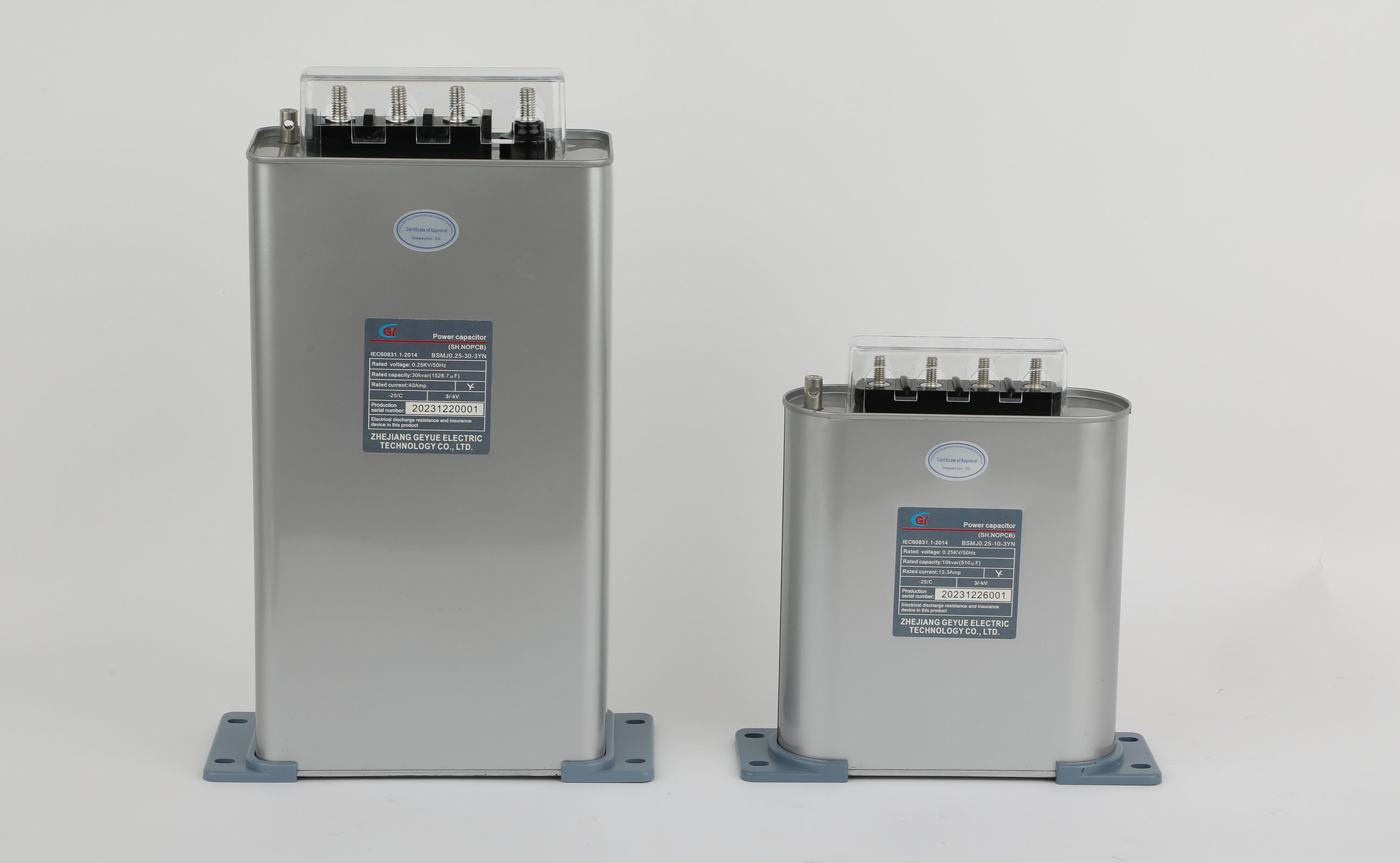
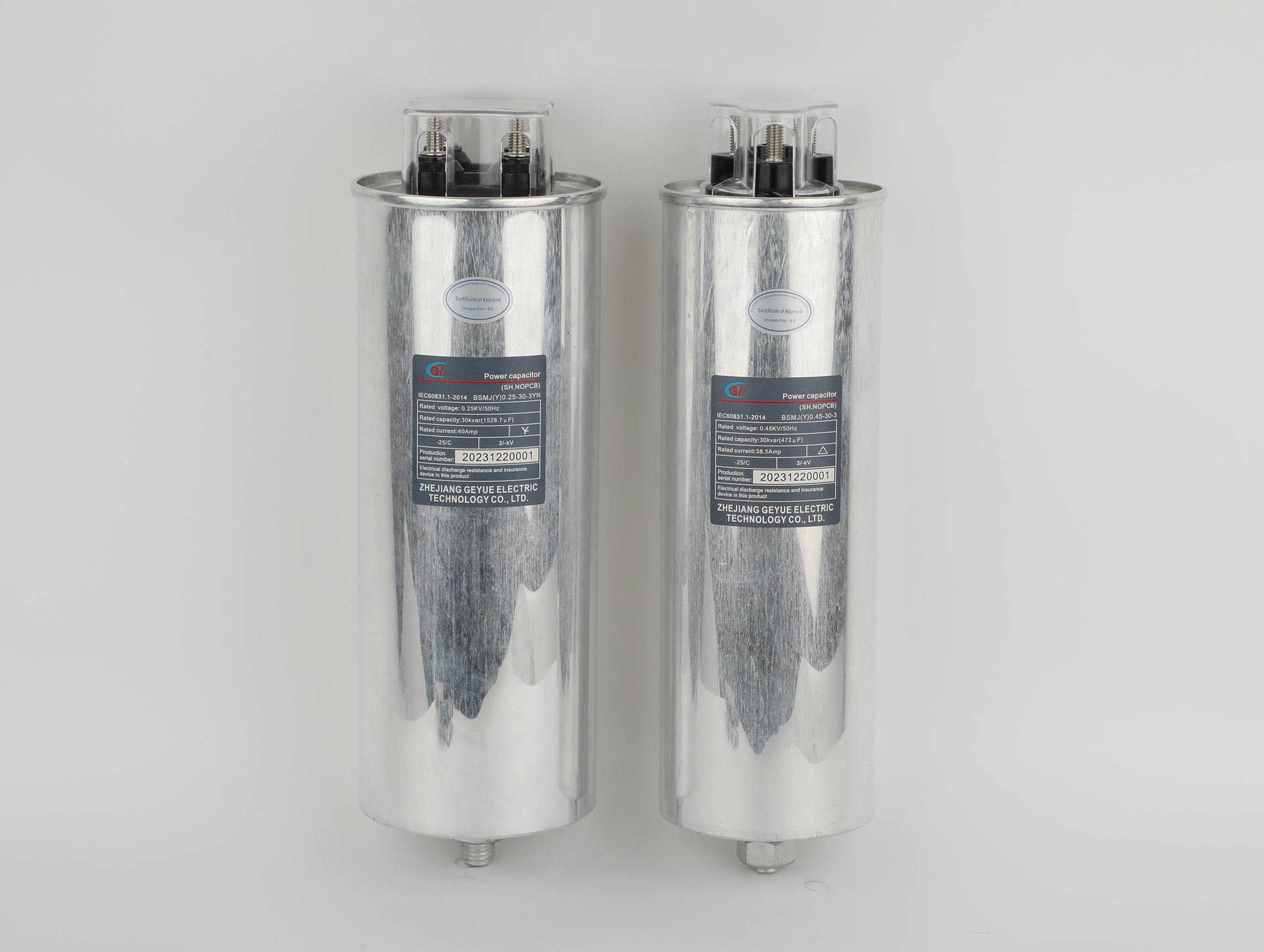
Geyue Electric firmly believes that the value of an excellent low-voltage reactive power compensation solution lies not only in the precise initial design, but also in the stability and reassurance during long-term operation. Geyue Electric is willing to use our durable low-voltage reactive power compensation equipment as the foundation, combined with professional system assessment capabilities, to help you build an efficient and stable low-voltage reactive power compensation system without worries, ensuring that your power assets always operate at their best. You are welcome to write to us at info@gyele.com.cn for inquiries.
- Can Cylinder Self-healing Shunt Capacitor Become the Ideal Choice for Reactive Power Compensation in Power Systems?
- Can Three Phase Intelligent Low Voltage Compound Switch Achieve Technological Innovation in Reactive Power Compensation of Power Systems?
- Can AC contactors become key actuators in industrial automation control?
- Can Self-healing Shunt Capacitor Become a Key Support for Smart Grid Construction?
- How Can Multifunctional Meter Lead a New Revolution in Energy Management?
- Can Active Power Filters Become the Key to Solving Power Quality Problems?

